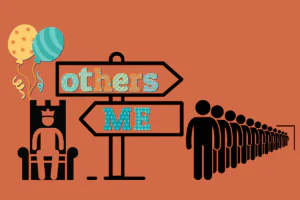
Guest blog by Courtney Rolla, MA, LCPC, SEP
In our fast-paced, high-demand world, emotional regulation often feels like a luxury. Many people seek to manage anxiety, anger, sadness, and overwhelm through mental strategies alone, such as positive affirmations, cognitive reframing, or sheer willpower. While these methods can help, they often bypass a crucial aspect of human experience, the body. You can utilize your body for emotion regulation through the lens of Somatic Experiencing.
Somatic Experiencing® (SE), a trauma resolution approach developed by Dr. Peter Levine, offers a profoundly different perspective. It teaches us that emotions are not just psychological events. Rather, they are biological processes. They live in our muscles, organs, breath, and nervous system. Understanding and working with the body is essential for true self-regulation.
Self-Regulation with Somatic Experiencing
Somatic Experiencing is a body-oriented approach to healing trauma and stress disorders. Rather than focusing primarily on the narrative of what happened, SE focuses on the physiological responses locked in the body. According to Levine, trauma isn’t what happens to us. It’s what happens inside us as a result of overwhelming experiences.
When we cannot complete natural survival responses (fight, flight, or freeze), energy gets trapped. This stuck energy can later manifest as anxiety, depression, chronic pain, emotional dysregulation, or even autoimmune disorders. SE helps people gently access, process, and release this held energy through felt sense awareness, pendulation (moving between regulation and dysregulation), and titration (working with small, manageable pieces of experience).
What is the meaning of Self-Regulation?
From the SE perspective, regulating emotions isn’t about suppressing or overriding them. It’s about completing the physiological cycles that were interrupted. This doesn’t mean telling yourself not to be anxious. It involves noticing where anxiety lives in your body and giving it a safe, supportive space to resolve that anxiety.
Imagine you’re feeling sudden rage after being criticized. A purely cognitive approach might encourage you to “think positively” or “calm down.” SE would invite you to become curious. Where do you feel the anger? In your fists? Your jaw? Your chest? Is there a sense of heat, tightness, or pressure? By tuning into these sensations with curiosity and kindness, the body’s natural regulation systems can engage.
The body knows how to move through emotions when given the chance. Think of a deer narrowly escaping a predator. It will shake intensely for a few minutes to discharge the remaining adrenaline and return to baseline. Humans have the same capacity, but social conditioning often inhibits our natural completion of fight and flight processes.
Key Somatic Experiencing Principles for Emotion Regulation
Several core Somatic Experiencing principles support healthier emotional regulation:
Tracking Sensations
SE encourages you to track bodily sensations instead of being swept away by an emotional story. Noticing “a fluttering in the stomach” or “heaviness in the chest” anchors you in the here and now. It creates a pause between stimulus and response, allowing space for more conscious choices.
Pendulation
Pendulation is the natural rhythm between states of contraction (stress or activation) and expansion (calm or ease). SE teaches that emotional regulation happens best when we allow ourselves to gently move between difficult sensations and comforting ones, rather than staying stuck at one extreme. Even in deep grief, there are moments of ease or lightness that can be noticed and savored.
Titration
Titration means working with small doses of difficult material instead of diving in all at once. When it comes to emotional regulation, titration prevents overwhelm. You might feel a wave of sadness and focus on just a small piece of it — the slight pulling in your throat — rather than getting lost in the whole story.
Resourcing
A resource is anything that helps you feel safer, stronger, or more supported. It could be a memory of a loved one, the warmth of a blanket, or the feeling of your feet on the floor. Before exploring heavy emotions, SE often helps people connect with their resources to build enough internal safety to process deeper layers of emotion.
Related: What is Somatic Experiencing Therapy?
Why Somatic-Based Self-Regulation Therapy Works
The nervous system operates largely outside of conscious control. When you’re triggered, your body prepares you to fight, flee, or freeze before your thinking brain (the neocortex) even registers what’s happening. Traditional cognitive methods, while helpful, often don’t reach the deeper autonomic responses driving emotional experiences.
Somatic approaches like SE access the subcortical brain, which is the part responsible for primal survival responses. By learning to listen to your body and gently complete incomplete survival cycles, you address emotional dysregulation at its root, rather than managing symptoms at the surface.
Additionally, somatic work builds what neuroscientists call interoceptive awareness, or the ability to sense internal bodily states. Research shows that increased interoceptive awareness correlates with greater emotional resilience and overall well-being.
Practical Tips to Get Started
Even without formal SE training, you can begin incorporating somatic principles into your emotional regulation toolkit:
- Pause and Notice: When you feel an emotion rising, pause and ask: *What do I notice in my body?*
- Name Sensations: Label bodily sensations without judgment (e.g., “tingling in my arms,” “tightness in my belly”).
- Support Pendulation: When feeling intense emotion, gently shift your attention between the uncomfortable sensation and something neutral or pleasant (like the feeling of your feet on the ground).
- Find Your Resources: Identify a few sensory experiences, memories, or people that make you feel safe and grounded.
- Stay Curious: Approach your body sensations with curiosity rather than judgment. Trust that your body is wise and capable of moving toward healing.
From a Somatic Experiencing perspective, self-regulation isn’t about controlling or suppressing feelings. It’s about supporting the body’s innate ability to move through emotional energy. By listening to the wisdom of our bodies, honoring the rhythm of activation and deactivation, and working gently with ourselves, we can experience profound emotional resilience. Somatic Experiencing reminds us that true healing flows from within.
Check out some of our YouTube videos to learn more about using SE to regulate your emotions. If you’re in Illinois and want to work with a Somatic Experiencing Practitioner, contact us to be connected to an SEP for either telehealth or in-person sessions in our Glen Ellyn, Sycamore, or Chicago (Jefferson Park) offices.
Courtney applies a Somatic Experiencing framework to utilize the body’s wisdom in healing. She also uses attachment theory and a variety of traditional psychotherapy approaches in her work. She sees clients by telehealth.



